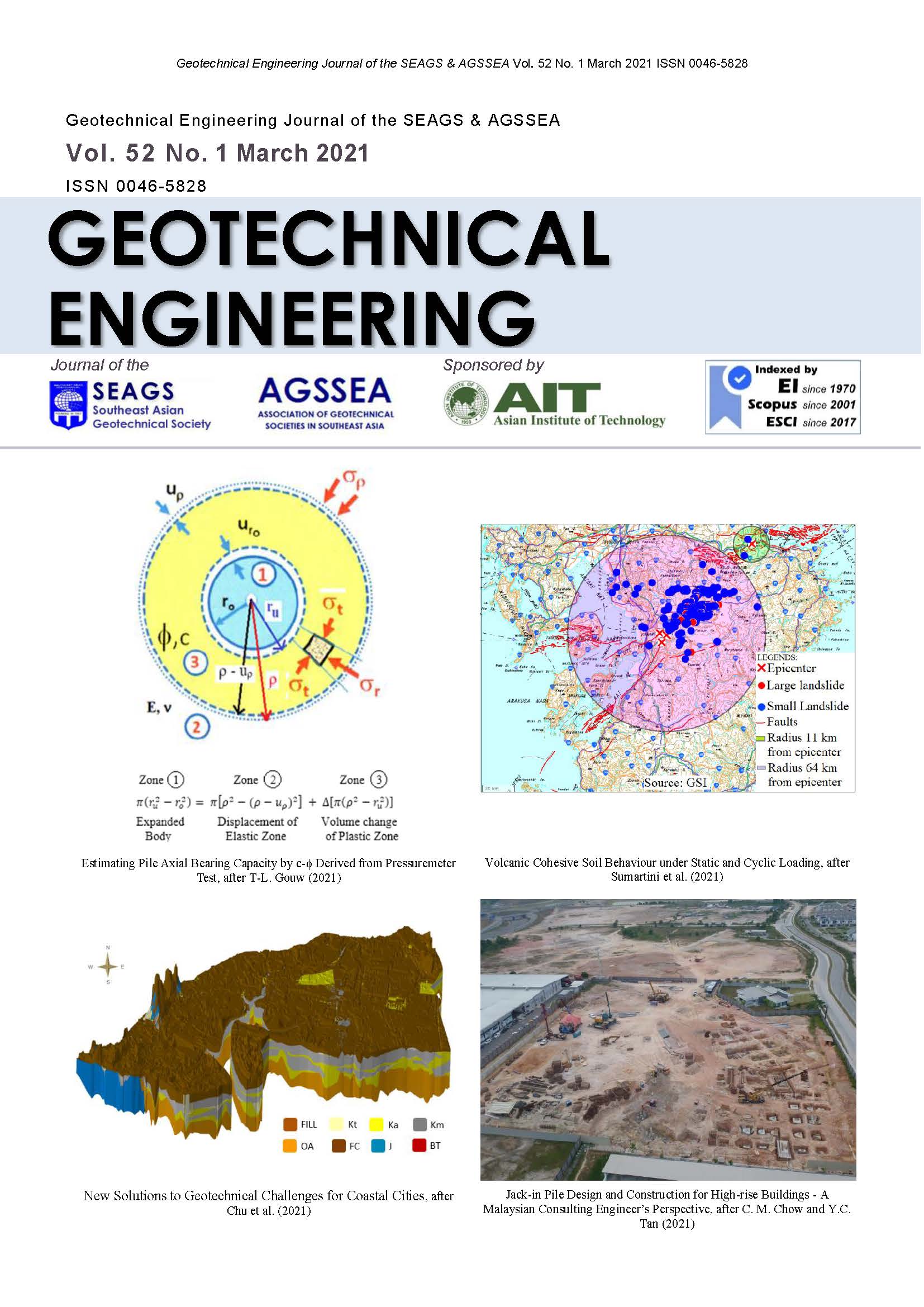An Investigation of the Elastic Modulus of Cement-Stabilised Soil by Wet Mixing Method for Sand Ground
Main Article Content
Abstract
This paper presents the results of the experimental study to determine the correlation between the elastic modulus (E50) and the unconfined compressive strength (qu) of cement-treated soil by wet mixing method. Laboratory experiment program was conducted for four soil types: clayey sand, fine sand, medium sand and coarse sand with the amount of cement from 150 to 350 kg cement per cubic meter of natural soils. The unconfined compression tests were conducted, and stress-strain curves were recorded by Trapezium 2.24 software to determine qu in all cases at the ages of 7, 14, 21, 28, and 56 days. Bayesian Model Averaging method (BMA) was used to analyse the effect of cement content, soil type, curing time to the elastic modulus E50 and determine the linear regression equations between E50 and qu. The results can be applied for determining of the elastic modulus E50 of cement-treated sand by a wet-mixing method in order to calculate and design soil-cement columns bearing load for a high-rise building foundation.
Article Details

This work is licensed under a Creative Commons Attribution-NonCommercial-NoDerivatives 4.0 International License.
Copyright © 2019 Association of Geotechnical Societies in Southeast Asia (AGSSEA) - Southeast Asian Geotechnical Society (SEAGS).


